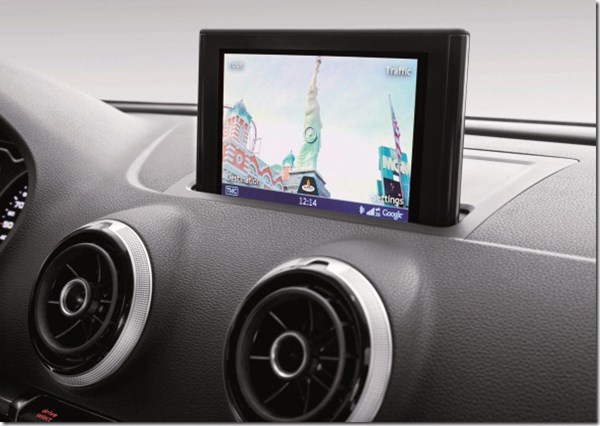Google, Audi, Hyundai, Kia and Navigation Apps
One of the things that Audi cleverly did was to integrate Google Earth into its navigation system.
#electronics
One of the things that Audi cleverly did was to integrate Google Earth into its navigation system. While other OEMs are chasing their own versions of navigation interfaces (generally variants on existing themes, although Chrysler using Garmin straight-up was an excellent idea), Audi went to a trusted source. (Think only of the rare Apple debacle when it decided that its Map app was superior. . . .)

Audi navi system with Google Street View
Just as there were fast followers when it came to aping Audi’s use of LEDs, there are now clever companies that are working with Google for their navigation systems. Hyundai and Kia have both separately announced that they’re going to be using Google Maps application programming interfaces (APIs) in their telematics systems, Blue Link for Hyundai and UVO eServices for Kia.
Barry Ratzlaff, director of Customer Connect at Hyundai Motor America, said, “The integration of Google Maps APIs makes Blue Link even more effective. We look forward to continuing work with Google to bring innovative solutions to Hyundai owners.”
Henry Bzeih, head of the connected car program and chief technology strategist of Kia Motors America, said, “The newest iteration of the UVO platform is a breakthrough as one of the industry’s first mobile pure app-based telematics systems, and now with the Google solutions and APIs, we take the platform to yet another level of enhancement for the Kia customer. Due to the popularity and ease-of-use of Google Maps, owners can remain confident in the technology and information being delivered to them.”

Coming soon: Google-based navi for Kia
Here’s the thing: People have long talked about the foolishness of the proverbial “trying to reinvent the wheel” when it comes to developing new products. Yet for some reason, when it comes to telematics, OEMs are spending a seemingly inordinate amount of time trying to reinvent interfaces and applications, despite the fact that even the people who are working on those projects probably have an iPhone or a Samsung product in their pocket.
When asked about that, I often hear about how those iOS and Android interfaces weren’t designed for auto.
Which reminds me of the people who went on a great length talking about why it was necessary to hardwire cell phones into cars because those mobile devices just weren’t appropriate for cars. . . .
RELATED CONTENT
-
Rivian Gets Even More Money, Now From Ford
The electrification of automotive is serious business. This week it was announced that Ford is making a $500-million equity investment in Rivian.
-
Mustang Changes for 2018
On Tuesday Ford unveiled—using the social media channels of actor Dwayne Johnson (this has got to unnerve some of the auto buff book editors)—the 2018 Mustang, which has undergone some modifications: under the hood (the 3.7-liter V6 is giving way to a 2.3-liter EcoBoost four, and a 10-speed automatic is available), on the dash (a 12-inch, all-digital LCD screen is available for the dashboard), at the tires (12 wheel choices), on the chassis (MagneRide damper technology is being offered with the Mustang Performance Package), and on the exterior (three new paint colors). And while on the subject of the exterior, there are some notable changes—a lower, remodeled hood, repositioned hood vents, new upper and lower front grilles, LED front lights, revised LED taillamps, new rear bumper and fascia.
-
The Genovation GXE: >220 mph and Street Legal
A 2019 Corvette Grand Sport has a starting price on the order of $66,950. The Genovation GXE, which is predicated on the Corvette Grand Sport, will set you back some $750,000.


.jpg;width=70;height=70;mode=crop)